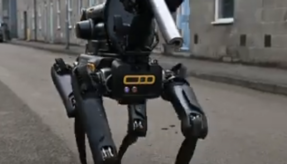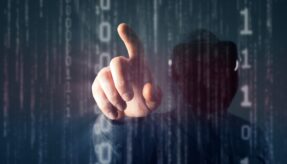
Physicists at the Defence Science and Technology Laboratory (Dstl) are working on using quantum technology to see through walls and navigate without signals.
Working with experts from UK industry and academia, Dstl is developing deployable devices that will be used to see through walls, around corners and underground.
One such technology is the gravity imager, which uses cold atom technology to identify minute changes in density caused by spaces such as tunnels or rooms, and create a ghostly picture of the hidden world.
The military applications for this technology include the detection and mapping of hidden areas, but it could also be used more widely to find, for example, sink holes and buried pipes.
Chris, a physicist in Dstl’s Future Sensing Technology team, explained: “Quantum-enhanced sensors can detect gravity changes at a very fine scale. We’re working with industry and academia to shrink the size, weight and power of systems, moving from lab-based prototypes to deployable devices. Crucially, these devices retain the ability to perform measurements to a remarkable level of precision.
“We’re also developing mathematical tools to make use of the information that these sensors gather. In the case of the gravity imager, we can go from a collection of individual gravity observations to a three-dimensional image of what the subterranean world looks like.”
Working to ensure the UK’s defence and security sectors fully exploit this cutting-edge technology, Dstl is collaborating with the National Physical Laboratory, Birmingham University and Imperial College.
A number of other universities across the country including Glasgow, Strathclyde and Oxford are also working with Dstl on future innovative quantum sensing technologies.
Dstl also ran three successful summer schools over the course of a week for PhD students researching quantum technology. The courses gave the students the requisite mindset for military applications and systems engineering, as well as commercial and business skills, to help them think about real-world uses of their research and empower them to contribute to the future UK quantum landscape after they have concluded their current research.
The feedback to these week-long events from students has been incredibly positive with many believing the course to provide a valuable insight into how quantum engineering could be applied and make a significant contribution to everyday life.
Dstl has already worked with Thales to create a system that can see, image and identify multiple moving targets at range around corners using quantum photonic technology.
The system’s ultra precision means in theory it could be used to diagnose medical disorders and detect density anomalies without the need for invasive procedures.
Quantum could also be used to thwart the effects of space weather events that interfere with the global navigation satellite system (GNSS), which includes GPS.
Quantum-based technology used to plot position, navigate and keep time would not be affected by these phenomena and would also be immune from intentional jamming and spoofing.
Chris added: “As well as the gravity imager, we’re working on quantum clocks and accelerometers for ultra-precise timing and navigation. GNSS relies on a strong signal between satellites and receiver; whenever this connection is lost or degraded, for example if you’re inside a building or tunnel, the uncertainty in your position grows. Quantum sensors bypass this issue by taking local measurements of motion.
“The potential applications extend beyond military use; for example, first responders could have a navigation system to help in a collapsed building.”
For more information, visit: https://www.gov.uk/government/organisations/defence-science-and-technology-laboratory
If you would like to join our community and read more articles like this then please click here.
Defence Science and Technology Laboratory Dstl GNSS GPS quantum technology







